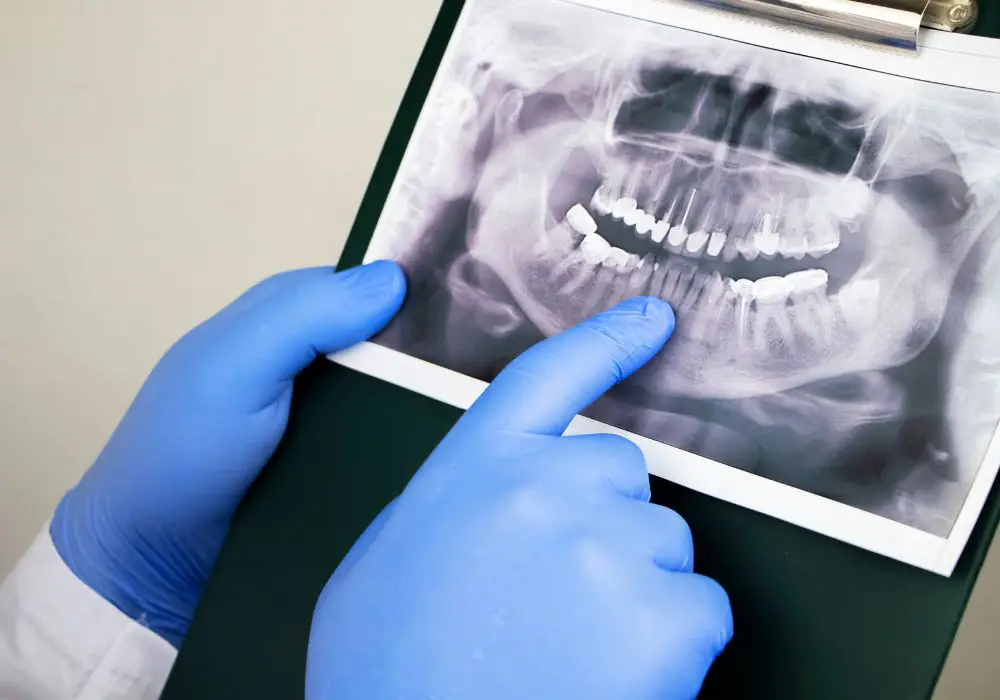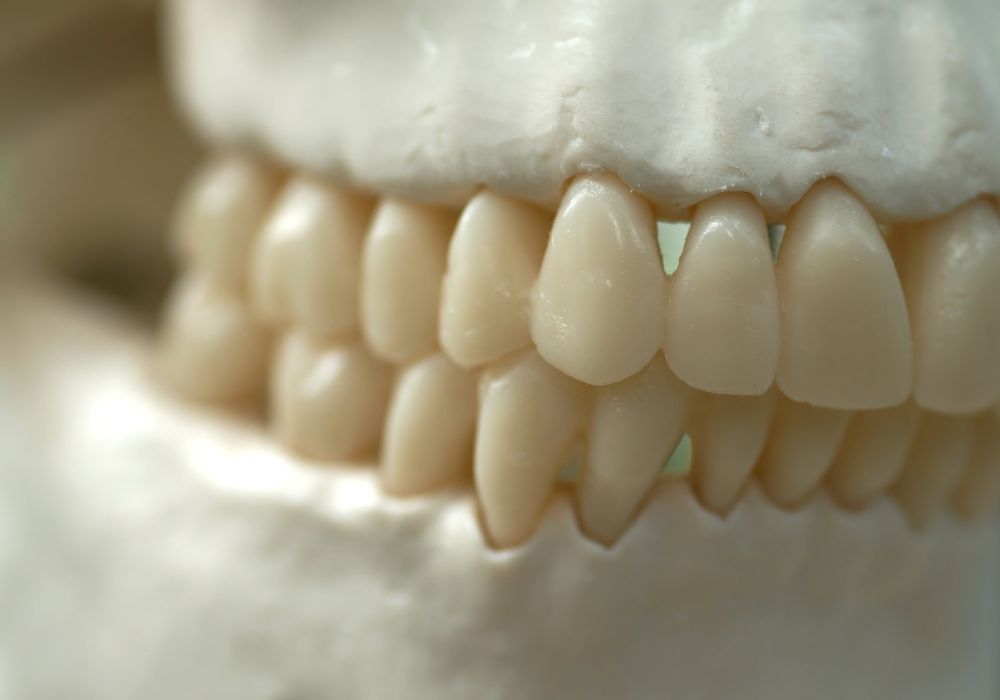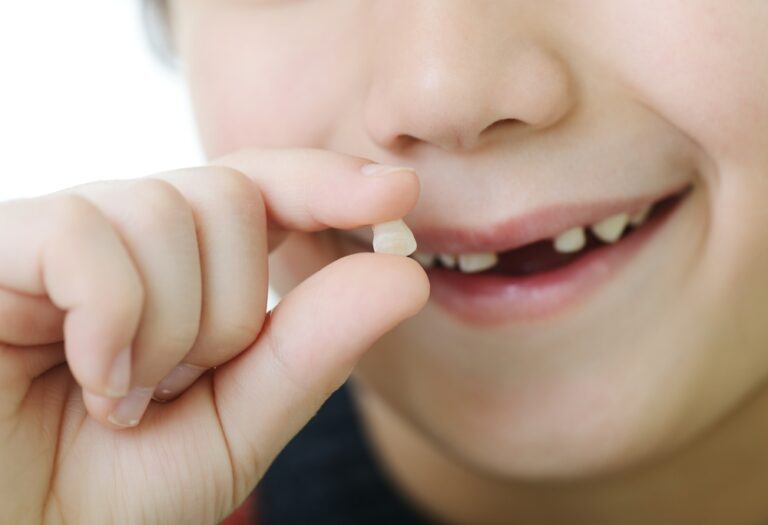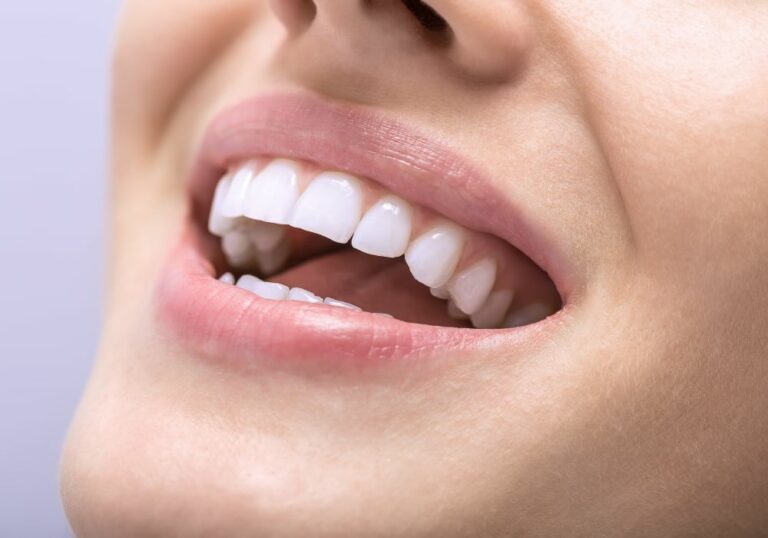Human teeth come in a wide variety of shapes and sizes, but if you look closely, most teeth have some degree of pointedness versus being perfectly square or flat. This tapered, spiky architecture develops due to the important functions our teeth serve in biting, chewing and mechanically breaking down food. Flat, blunt teeth would not serve these roles well.
In this article, we will closely examine tooth anatomy, evolution, and function to understand the advantages conferred by the pointy shape of our teeth. We’ll see how nature selected for optimal tooth shapes over many generations to create effective tools for piercing, cutting, tearing, crushing and grinding all types of foods to sustain our ancient ancestors.
Tooth Anatomy

Human teeth consist of multiple layers, tissues and structures that give them their characteristic sharp, pointy shape versus square. Here are some of the key anatomical features that contribute:
Enamel
The outermost layer of a tooth is a very hard, dense, white material called enamel. Enamel forms a thin covering over the visible crown portion of each tooth. It has a high mineral content that makes it smooth, rigid and highly resistant to damage. The curvature of enamel from the tip or apex to the cementoenamel junction gives teeth a tapered, pointy edge rather than a flat top.
Though extremely hardy, enamel can slowly wear down over time with excessive chewing or acid erosion. As the enamel thins, teeth appear more yellow as the underlying dentin shows through. But in youth, enamel provides a tough pointed surface ideal for biting and chewing forcefully without fracturing.
Dentin
Under the enamel layer is a thick, bonelike tissue called dentin. Dentin makes up the bulk of each tooth, extending down through the roots. It has a high collagen content that makes it flex slightly more than rigid enamel. Dentin also demonstrating a tapering effect from top to bottom that contributes to pointiness versus squareness.
The dentin contains millions of tiny hollow tubes or tubules that radiate outward from the inner pulp cavity to the enamel border. This forms the hard, sensation-conducting core of each tooth. Dentin is not as prone to fracture and can help absorb biting shocks.
Cementum
A softer bony substance called cementum covers the dentin of the tooth roots and attaches teeth to the jawbone sockets. Cementum is excreted by cells called cementoblasts and supports the periodontal ligament fibers. It forms a relatively sharper angle transition where the enamel of the crown meets the flared roots.
Cementum also fills in cavities and remodels to compensate for chewing forces during life. It provides cushioning where the sharper enamel crown transitions to the bone. Cementum continues rebuilding as long as a tooth remains in the mouth.
Pulp
At the center of each tooth is a soft pulp cavity containing blood vessels, nerves and cellular material. The pulp extends down through the roots to supply nutrients and sensations to the rest of the tooth. This inner pulp chamber and root canals follow the general tapered, conical shape of the overall tooth structure.
Periodontal Ligament
The periodontal ligament is a layer of tough, elastic fibers that surrounds each tooth root and anchors it firmly into the bony jaw socket. The ligament fibers extend outward in a radial pattern from the pointy tooth root apex to attach into the socket walls.
This creates a kind of suspension system to hold teeth in place. The fibers conduct sensations of pressure while allowing teeth to move slightly. The fibers follow the angled shape of the roots.
Blood Supply
Arteries and veins enter the tip of the tooth root to provide nourishment to the living pulp tissue inside. This vasculature mirrors the overall conical shape of the tooth from top to bottom. The blood keeps pulp tissue healthy to sense temperature and pressure.
Nerves
Tiny nerve fibers also run from the pulp chamber out the root apex to join with trigeminal nerve branches. They carry sensations of hot, cold, pressure, and pain signals to the brain to protect the tooth. Like other components, the nerves conform to the pointed tooth anatomy.
Tooth Evolution

The ancestral origins of human teeth also help explain their characteristic sharp, pointed shapes versus square profiles:
Fish
Early fish evolved conical, spear-like teeth to help grasp slimy prey and prevent escape. Their numerous simple cones provided a gripping function in the absence of arms or legs.
Reptiles and Amphibians
Land-based tetrapods retained conical teeth but added more variation and complexity for specialized roles. Reptiles developed sharp, backwards-facing teeth to snag prey while amphibians evolved tusk-like teeth for mating competition.
Mammals
Early mammal-like reptiles from 300 million years ago evolved differentiated teeth with more complex cusps and grooves. Their teeth became more precise tools for specific biting and chewing needs. Over time, cusps became aligned into rows for improved shearing.
Primates
Early prosimian primates evolved modified conical teeth with sharpened crests to eat insects and fruit. Their lower canines angled to meet upper incisor notches for improved cutting. New World monkeys developed more robust molars for chewing tougher plant foods.
Ancient Hominids
Early hominid species from 2-6 million years ago (Australopithecines) had thicker molar enamel and larger teeth than modern humans. Their teeth showed wear from stripping fruits, seeds and tough vegetation.
Modern Humans
Anatomically modern humans have smaller teeth than ancient ancestors, but retain conical points suited for an omnivorous diet. Our canines are smaller but still sharper than other teeth. Premolars show some pointedness for shearing while molars have bumpy cusps for grinding.
In summary, natural selection over millions of years of evolution favored teeth with pointed shapes suited for specialized biting, chewing and grinding functions. This drove incremental improvements in tooth cusp morphology across different ancestral species.
Tooth Classifications
Humans have four distinct tooth types, each with characteristic shapes:
Incisors
The front four teeth in each dental quadrant are incisors. Their primary role is biting and cutting food. Incisors have a pronounced facial prominence tapered to a chisel-like edge for slicing bites off foods. Their lipside profile angles down from tip to base, creating a wedge of enamel for incising bite-sized morsels.
Canines
The four sharp, pointed canine teeth next to the incisors function for tearing and grabbing foods. They have a pronounced single cusp tapering to an apex. Their roots are longer than incisors and anchor them strongly in place. The canine’s spear-like shape penetrates and hooks foods.
Premolars
Moving posteriorly, the two premolars in each quadrant have 2-3 pointed cusps useful for shearing and cutting. Their partially fused roots give them stability for tearing motions. They assist the incisors and canines during chewing with their small pointed biting surfaces.
Molars
The three large rear molars have broader crowns with rounded pointed cusps and grooves for crushing, grinding and mashing food. They pulverize tough particles and have roots that flare outward to support their bulk. The molars’ bumpy tips provide surfaces to concentrate chewing forces and grind foods.
In total, evolution sculpted our 32 adult teeth into four classes that work together to provide biting, tearing and chewing functions thanks to pointy shapes.
Tooth Function

The intended usage of our teeth also required the development of their sharp, pointy architecture:
Biting and Piercing
The incisors and canines at the front are perfectly shaped with sharp edges for biting off and piercing through food material. Their tapered crowns allow them to incise and slice food objects cleanly and precisely.
Tearing and Ripping
The jagged points on the canines, premolars and some molars help grab, shred and tear pieces of food efficiently. Fish hooks are a good analogy for how their tips mechanically grip food and tear portions free.
Crushing and Grinding
The broad molars with multiple rounded bumps are well-designed for crushing down tough foods and grinding them into digestible particles, much like a mortar and pestle. Pointed cusps provide the necessary mechanical forces.
Grasping and Holding
Pointed ends on incisors, canines and premolars help grasp and hold food tightly in place while chewing. They provide an anchoring effect to keep food trapped on the teeth during bite motions.
Defense
While less needed today, pointed front teeth historically helped humans threaten attackers and rivals. Sharpened tooth architecture could also inflict painful and dangerous bite wounds when used aggressively. Even today, pointy teeth look intimidating.
In summary, the ideal design of our teeth reflects the biting, chewing, grinding, grasping, and even defensive purposes they evolved to serve. More rounded designs would not be effective across all these functions.
Benefits of Pointed Teeth
There are many advantages conferred by the pointy shape of teeth compared to more blunted, flattened or perfectly square shapes:
- Cutting efficiency – Sharp cutting edges require less force and make cleaner cuts through foods than flatter surfaces.
- Gripping ability – Pointed cusps dig in and anchor to food for improved tearing motions and preventing slippage.
- Chew and grind – The bumpy, pointy crowns provide mechanical advantages and concentrated forces for pulverizing tough foods during chewing and grinding motions.
- Stress distribution – The curved and sloped sides of pointed teeth distribute bite forces efficiently and withstand cracking better than flat crowns.
- Plaque removal – The embrasures and grooves between pointy teeth provide better self-cleaning of plaque and debris compared to tight contacts between square teeth.
- Cavity resistance – The tighter anatomical contact areas between pointy teeth help block food debris and acid that causes cavities. Square contacts would likely let more through.
- Jaw alignment – Pointed cusps and grooves help guide the articulated fit of the upper and lower teeth into proper occlusion and kinematics. Square teeth would articulate poorly.
- Appearance – Humans often perceive pointed teeth as attractive, fierce-looking, masculine, sexy, or elegant. Flat, blunt teeth would look odd.
In summary, pointy tooth crowns provide so many structural and functional advantages over hypothetical blocky, blunt teeth.
FQA
Here are answers to some frequently asked questions about why teeth are pointy:
Why are human teeth not square like bricks?
Square tooth crowns with flat biting surfaces simply would not serve the biting, chewing, and grinding functions our teeth evolved for. Having sharp points and slopes is better suited to cutting, piercing, anchoring and pulverizing food particles efficiently. Square teeth would be poor tools in comparison.
Would perfectly square teeth even work properly?
Hypothetically, square molars might still crush and grind reasonably well under vertical loads. But incisors and canines with flat edges would not cut cleanly or tear foods effectively. Tearing forces would likely fracture the corners of square teeth with their increased stress concentration factors.
Do any animals actually have square molar teeth?
Most mammals have some pointed aspects to their teeth, even herbivores. However, some rodents like squirrels and rats do have more flattened, blunt molars for gnawing and chewing. But their large front incisors are still chisel-shaped with enamel only on the front for gnawing cuts.
Could I file my teeth down flat if I wanted square ones?
It’s theoretically possible but inadvisable to mechanically file down and flatten your own front teeth intentionally. This permanent alteration would remove the protective enamel layer and expose the softer dentin material to damage. Normal biting forces would then likely chip or even fracture the teeth due to the increased stresses. It’s best not to alter teeth’s anatomical shape.
If I had naturally square teeth, would I still need braces?
Having flattened, square dental crowns would still benefit from orthodontic alignment in most cases, especially for optimal bite function. Misaligned or rotated bricks would still cause problems like uneven wear, chipping, jaw joint issues and make chewing less efficient. Braces would still help place the squares into ideal positions.
Do any prehistoric animals or hominids have square teeth?
Some extinct species evolved unique dental shapes and massive teeth compared to humans, but most retained pointed aspects. Large, flattened molars are found in herbivorous dinosaurs or prehistoric sloths. But even Tyrannosaurus rex had serrated blade-like teeth. Early hominid teeth were larger and thicker but still pointy. Neanderthals had especially pronounced incisors.
Conclusion
In summary, the tapered, pointy shape of human and other mammal teeth developed through millions of years of evolution to serve specific functions like biting, chewing, shredding and grinding food. Their conical crowns tipped with super-hard enamel represent specialized tools optimized by natural selection for piercing, shearing and pulverizing foods efficiently without fracture.
This pointy architecture of our teeth persists because it works so well! Our complex mixes of incisors, canines, premolars and molars create together a system of cusps, grooves and edges that can effectively break down virtually any edible food substance.
So next time you smile and see those pearly white choppers, appreciate the functional elegance built into their distinctive pointed shapes handed down over generations. Our pointy teeth may seem simple, but represent exquisitely fine-tuned biological instruments.






